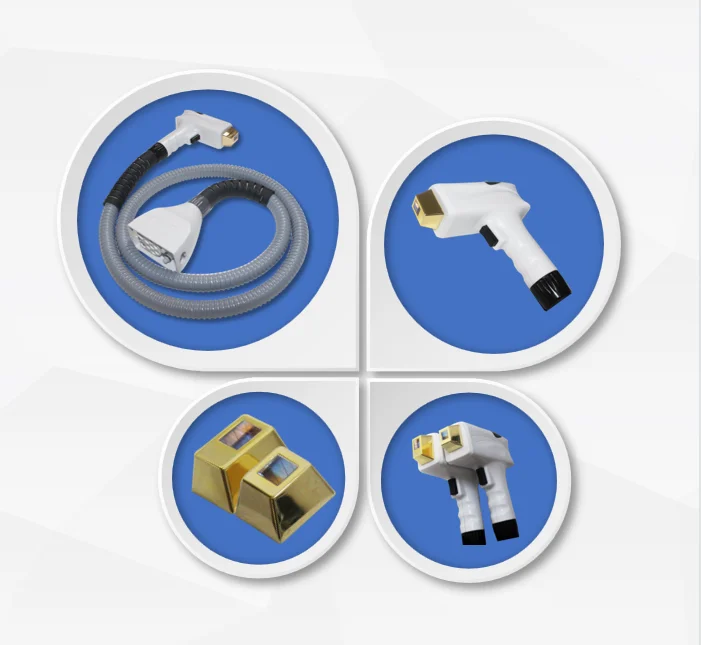Laser hair removal has become a popular option for individuals looking to manage their body hair. With its convenience and long-lasting results, it's no wonder that it's a dominant approach in the cosmetics industry. However, like any medico-aesthetic procedure, laser hair removal is not without its risks. Burns, in particular, are a significant concern for both clients and practitioners due to their potential for causing not just discomfort, but also long-term damage. In this comprehensive guide, we will unpack the concept of laser hair removal burns, their permanency, and how to safeguard against them.
Understanding Laser Hair Removal Burns
The process of laser hair removal involves the use of high-energy light beams to remove unwanted hair. The principle is simple: the light is absorbed by the pigment in the hair, which damages the hair follicle enough to impair its ability to regrow. However, this precision isn't always guaranteed, and there's a small but notable risk of the laser's heat energy causing burns on the skin's surface.
Why Burns Can Occur During the Procedure
Several factors can contribute to burns happening during laser hair removal. One crucial aspect is the equipment's settings—the intensity of the laser and the duration it's applied for needs to be accurately calibrated based on a client's skin type and the color of their hair. If the settings are too high or the technician isn't skilled enough, the risk of burns increases. Skin that's been tanned or recently exposed to the sun is also more susceptible to damage.
Another potential cause for burns is the negligence of the technician or the client. Incorrect laser application, compounded by inadequate cooling measures, can result in overheating of the skin. Additionally, some individuals may experience an adverse reaction to the procedure due to their particular skin sensitivity or conditions.
Are Laser Hair Removal Burns Permanent?
The nature of laser hair removal burns largely depends on their severity. Most commonly, what clients experience isn't a true burn but rather temporary redness and soreness, akin to a mild sunburn. These usually resolve within a few hours to days. However, second-degree burns, which can be identified by blistering and are quite painful, are a possibility in the most severe cases.
Differentiating Temporary Redness from Permanent Damage
Permanent damage in the form of burns post-laser hair removal is relatively rare. Modern laser technology is designed to minimize the risk of long-term skin damage. Temporary discoloration or darkening of the skin, known as hyperpigmentation, can occur, but it's typically reversible.
Genuine burn injuries, if they do occur, can take weeks to heal. The resulting scars, if they happen, could be permanent. It's essential for anyone undergoing laser hair removal to understand that while these outcomes are not the norm, they are within the realm of possibility.
Prevention and Management of Burns
To mitigate the risk of burns during laser hair removal, both the clinic and the client must play their part. The salon must employ adequately trained technicians who are well-versed in operating the laser equipment and following safety protocols. This includes performing a patch test on the client's skin to ensure their compatibility with the treatment.
Preventive Measures for Clinics and Clients
Before the procedure, clients should be advised on how to prepare for the appointment correctly. This includes avoiding sun exposure and being honest about any medications or skin conditions they have. On the clinic's side, staff training and regular maintenance of the laser equipment are non-negotiable. Laser settings and cooling techniques need to be carefully chosen to suit each client's unique profile.
A patch test should always be carried out on a small area of skin to see how the patient reacts before the full procedure is undertaken. This an essential step that, if overlooked, can lead to immense complications.
Treatment Options for Managing Burns
For those unfortunate enough to experience a burn during laser hair removal, swift and appropriate action is needed. Immediate care includes cooling the area with ice packs and applying aloe vera gel to soothe the skin. Depending on the severity, over-the-counter or prescription medications may also be required.
Longer-term, treatments such as corticosteroid creams, which reduce inflammation, can be helpful for managing any damage. Laser burn cases might necessitate a visit to a dermatologist who might recommend specialized treatments. In extreme cases, skin grafts can be the only solution.
Real-Life Cases and Testimonials
Examining real-life cases and testimonials can shed light on the seriousness of burns. Individuals who have experienced burns during laser hair removal often report lasting pain, discomfort, and in some unfortunate situations, permanent scarring. By sharing these experiences, we can underscore the importance of due diligence and awareness.
Learning from Others' Experiences
Case studies and stories of individuals who have suffered from laser hair removal burns serve as cautionary tales for both clients and technicians. We can learn from their experiences to avoid similar situations. It is crucial to do thorough research on clinics' reputations and the qualifications of the practitioners before undergoing any procedures.
Conclusion
Laser hair removal is generally safe and effective, but it is not entirely risk-free. Burns, though infrequent, are a possibility, and their severity can vary greatly. It's essential for both the clinic and the client to be well-informed and proactive about the potential for burns to occur. It is also critical to recognize the difference between temporary redness and genuine burn injuries and know how to address them promptly.
In the end, an informed and cautious approach is the best way to enjoy the benefits of laser hair removal, lessening any potential medical concerns. Clients should feel empowered to ask questions about the procedure and understand the steps taken to prevent burns. Similarly, clinics should have robust protocols in place to ensure the safety of their clients. Remember, the goal is not just to remove hair but to do so safely and without compromising the client's skin health.




